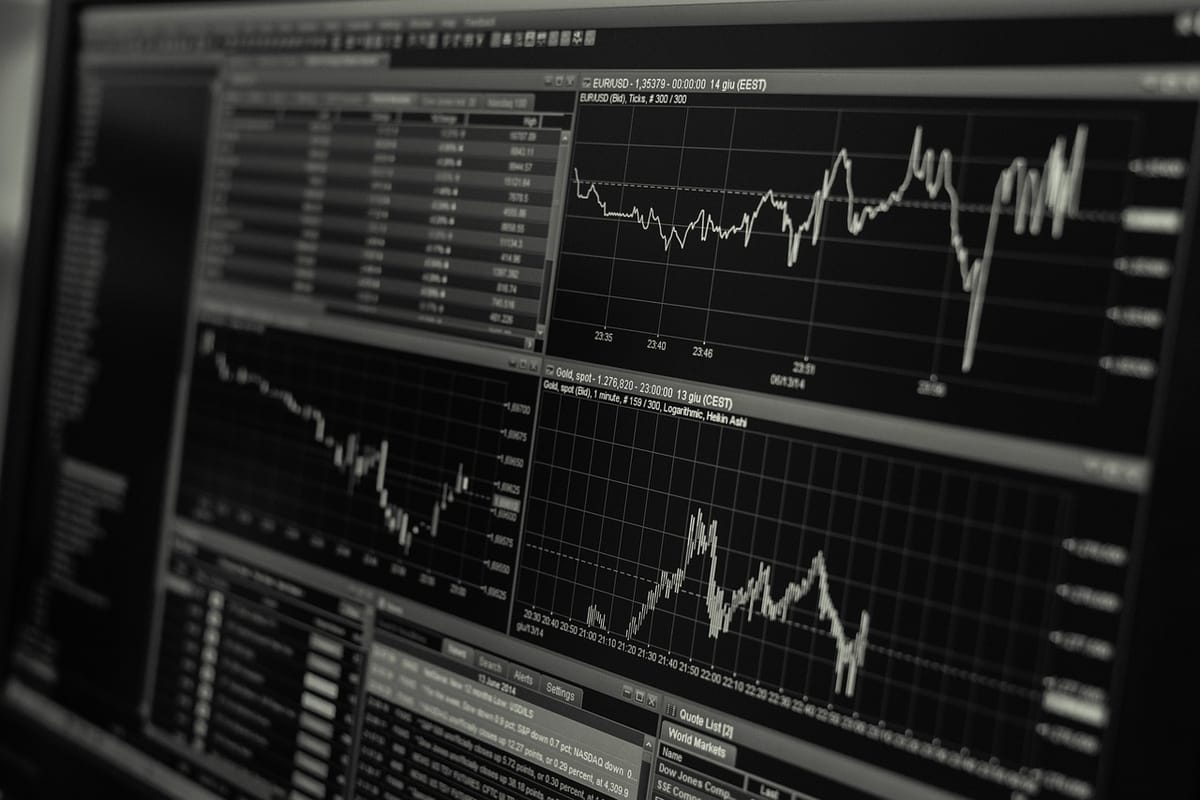Mastering Exchange Rate Forecasting | A Comprehensive Analysis of Predictive Techniques
Explore the intricacies of exchange rate forecasting in financial markets. Learn predictive methods, financial modeling, and the impact of factors like economic indicators and central bank policies

Introduction to Exchange Rate Forecasting
Exchange rate forecasting plays a crucial role in the financial markets, influencing investment decisions, trade, and economic policies. As a financial analyst, I have witnessed the impact of exchange rate movements on various sectors of the economy. In this article, I will delve into the intricacies of exchange rate forecasting, exploring the significance of accurate predictions and the various methods used to forecast exchange rates.
Understanding the dynamics of exchange rate movements is essential for businesses engaged in international trade, investors diversifying their portfolios, and policymakers formulating economic strategies. Exchange rate fluctuations can significantly affect the profitability of companies engaged in import-export activities, as well as the returns on international investments. Therefore, mastering exchange rate forecasting is imperative for making informed financial decisions and mitigating risks associated with currency fluctuations.
Importance of Exchange Rate Forecasting in Financial Markets
The importance of exchange rate forecasting in financial markets cannot be overstated. Currency markets are highly volatile, and exchange rate movements can have far-reaching implications for global trade and investment. Accurate exchange rate forecasts are essential for multinational corporations to hedge against currency risks, optimize their cash flows, and enhance their competitiveness in the global market.

Moreover, exchange rate forecasts are vital for investors seeking opportunities in foreign exchange markets. By anticipating currency movements, investors can capitalize on favorable exchange rate trends and diversify their investment portfolios across different currencies. Additionally, accurate exchange rate forecasts enable financial institutions to offer risk management products such as currency derivatives to their clients, thereby facilitating international trade and investment.
Understanding Predictive Methods in Exchange Rate Forecasting
Predictive methods in exchange rate forecasting encompass a wide range of quantitative and qualitative techniques. From econometric models to advanced machine learning algorithms, these methods aim to capture the complex dynamics of currency markets and generate reliable forecasts. Econometric models, such as autoregressive integrated moving average (ARIMA) and vector autoregression (VAR), are commonly used to analyze historical exchange rate data and identify the underlying patterns and relationships.
Machine learning techniques, including neural networks, support vector machines, and random forests, have gained popularity in exchange rate forecasting due to their ability to process large volumes of data and capture nonlinear relationships. These methods leverage historical exchange rate data, macroeconomic indicators, and market sentiment to generate probabilistic forecasts, offering valuable insights for decision-making in currency markets.
Financial Modeling for Exchange Rate Forecasting
Financial modeling is a fundamental tool for exchange rate forecasting, enabling analysts to simulate different scenarios and assess the potential impact of various factors on currency movements. Through the use of mathematical models and statistical techniques, financial analysts can construct predictive models that take into account economic variables, interest rate differentials, inflation rates, and geopolitical events to forecast exchange rates.
Monte Carlo simulation, a widely used financial modeling technique, enables analysts to generate multiple possible outcomes based on probability distributions of key variables, providing a comprehensive view of the potential range of exchange rate movements. By incorporating risk factors and market uncertainties into financial models, analysts can improve the accuracy of exchange rate forecasts and develop robust risk management strategies for currency trading.
Time Series Analysis for Exchange Rate Forecasting
Time series analysis is a powerful method for examining historical exchange rate data and identifying underlying patterns and trends. By applying statistical techniques such as moving averages, exponential smoothing, and autoregressive integrated moving average (ARIMA) models, analysts can extract valuable insights from time series data to forecast future exchange rate movements.
Furthermore, time series analysis enables analysts to detect seasonality, cyclical patterns, and structural breaks in exchange rate data, providing a deeper understanding of the factors influencing currency movements. This method is particularly useful for identifying long-term trends and short-term fluctuations in exchange rates, allowing analysts to develop robust forecasting models and assess the potential impact of external factors on currency markets.
Machine Learning Applications in Exchange Rate Forecasting
The application of machine learning techniques in exchange rate forecasting has transformed the way analysts analyze and predict currency movements. Machine learning algorithms, such as neural networks, decision trees, and ensemble methods, are capable of processing vast amounts of data and capturing complex relationships between economic variables, market sentiment, and exchange rates.
By leveraging historical exchange rate data, macroeconomic indicators, and geopolitical events, machine learning models can generate accurate and dynamic forecasts, adapting to changing market conditions and emerging trends. Moreover, the ability of machine learning algorithms to learn from past data and adjust their predictions in real-time makes them invaluable tools for financial institutions, investors, and policymakers seeking reliable exchange rate forecasts.
Statistical Analysis Techniques for Exchange Rate Forecasting
Statistical analysis techniques play a crucial role in exchange rate forecasting, providing valuable insights into the relationships between economic variables and currency movements. Regression analysis, correlation analysis, and time series modeling are commonly used statistical methods to identify the drivers of exchange rate fluctuations and assess the predictive power of different factors.
Furthermore, statistical analysis enables analysts to evaluate the accuracy of exchange rate forecasts and measure the impact of economic indicators, market sentiment, and central bank policies on currency markets. By applying rigorous statistical techniques, analysts can identify significant variables that influence exchange rates and develop robust forecasting models that capture the complexity of currency markets.
Factors Influencing Exchange Rate Forecasting
Exchange rate forecasting is influenced by a myriad of factors, ranging from macroeconomic indicators and central bank policies to geopolitical events and market sentiment. Understanding these factors is essential for developing accurate and reliable exchange rate forecasts that account for the dynamic nature of currency markets.
Macroeconomic indicators such as GDP growth, inflation rates, and unemployment levels play a significant role in influencing exchange rate movements, reflecting the overall health of an economy and its impact on currency valuations. Additionally, central bank policies, including interest rate decisions, monetary policy statements, and interventions in foreign exchange markets, can have a profound effect on exchange rates, shaping market expectations and investor sentiment.
Geopolitical events, such as trade negotiations, geopolitical tensions, and geopolitical events, can introduce uncertainty and volatility into currency markets, influencing exchange rate dynamics and creating challenges for accurate forecasting. Moreover, market sentiment, driven by investor perceptions and risk appetite, can impact exchange rate movements, leading to fluctuations in currency valuations that require careful consideration in forecasting models.
Risk Management in Currency Trading

Effective risk management is essential for currency trading, particularly in the context of exchange rate forecasting. Currency traders and financial institutions utilize a range of risk management strategies to mitigate the impact of exchange rate fluctuations and protect their portfolios from unexpected currency movements.
Hedging strategies, such as forward contracts, options, and currency swaps, enable market participants to hedge against currency risks by locking in exchange rates for future transactions, thereby reducing their exposure to exchange rate volatility. Additionally, diversification of currency holdings and active portfolio management can help mitigate risks associated with currency movements, providing a buffer against adverse exchange rate fluctuations.
Moreover, risk management in currency trading involves the careful assessment of market conditions, the implementation of stop-loss orders, and the use of risk management tools to monitor and control currency exposures. By integrating effective risk management practices with accurate exchange rate forecasts, currency traders can navigate the complexities of currency markets and protect their financial interests in the face of market uncertainties.
The Role of Economic Indicators in Exchange Rate Forecasting
Economic indicators serve as vital inputs for exchange rate forecasting, offering valuable insights into the economic health and future prospects of a country. Key economic indicators, including GDP growth, inflation rates, trade balances, and employment data, provide analysts with fundamental information to assess the strength of an economy and its potential impact on exchange rates.
By analyzing economic indicators, financial analysts can gain a comprehensive understanding of the underlying factors driving exchange rate movements, allowing them to develop robust forecasting models that account for macroeconomic trends and potential market developments. Moreover, economic indicators serve as leading indicators for currency movements, offering early signals of economic shifts and potential changes in exchange rate dynamics.
Market Sentiment and Exchange Rate Forecasting
Market sentiment plays a significant role in shaping exchange rate movements, reflecting the collective perceptions and attitudes of market participants towards currency valuations. Sentiment analysis, a technique used to gauge market sentiment through the analysis of news, social media, and other sources of information, provides valuable insights into the potential direction of exchange rates and the prevailing market sentiment.
By incorporating market sentiment analysis into exchange rate forecasting models, analysts can assess the impact of investor perceptions, market rumors, and speculative activities on currency markets, gaining a deeper understanding of the psychological factors influencing exchange rate dynamics. This information is instrumental in developing accurate forecasts that capture both fundamental economic factors and the sentiment-driven influences on currency movements.
Impact of Central Bank Policies on Exchange Rates
Central bank policies wield considerable influence over exchange rates, as monetary policy decisions and interventions in foreign exchange markets can significantly impact currency valuations. Central banks utilize a range of policy tools, including interest rate adjustments, open market operations, and foreign exchange market interventions, to influence the supply and demand for their currencies and maintain price stability.
By closely monitoring central bank policies and announcements, analysts can assess the potential impact of monetary policy decisions on exchange rates, providing valuable insights into future currency movements. Additionally, central bank interventions in foreign exchange markets, aimed at stabilizing currency valuations or addressing market imbalances, can introduce volatility and uncertainty into exchange rate dynamics, necessitating careful consideration in forecasting models.
Global Economic Trends and Exchange Rate Forecasting
Global economic trends play a significant role in influencing exchange rate movements, reflecting the interconnected nature of the global economy and the impact of international developments on currency valuations. Economic trends in major economies, such as the United States, Eurozone, China, and Japan, can have profound effects on currency markets, shaping exchange rate dynamics and creating opportunities and challenges for exchange rate forecasting.
Moreover, shifts in global trade patterns, geopolitical developments, and international events can introduce volatility and uncertainty into currency markets, influencing exchange rate movements and requiring comprehensive analysis in forecasting models. By considering global economic trends and their potential impact on exchange rates, analysts can develop accurate forecasts that account for the broader macroeconomic environment and the interconnectedness of international financial markets.
Big Data Analytics and Artificial Intelligence in Exchange Rate Forecasting
The advent of big data analytics and artificial intelligence has revolutionized exchange rate forecasting, empowering analysts with advanced tools and techniques to analyze vast amounts of data and generate precise forecasts. Big data analytics enables analysts to process large volumes of structured and unstructured data, including financial market data, social media feeds, and economic indicators, to extract valuable insights and patterns for exchange rate forecasting.
Furthermore, artificial intelligence, including machine learning algorithms, natural language processing, and deep learning models, has enhanced the accuracy and predictive power of exchange rate forecasting, enabling analysts to capture complex relationships and nonlinear patterns in currency markets. By leveraging big data analytics and artificial intelligence, analysts can develop sophisticated forecasting models that adapt to changing market conditions and provide actionable insights for decision-making in currency markets.
In conclusion, mastering exchange rate forecasting requires a comprehensive understanding of predictive methods, financial modeling techniques, and the intricate factors influencing currency markets. By leveraging advanced quantitative and qualitative techniques, including econometric models, time series analysis, machine learning algorithms, and statistical analysis, analysts can develop accurate and reliable exchange rate forecasts that account for the dynamic nature of currency markets.
Moreover, integrating market sentiment analysis, economic indicators, central bank policies, and global economic trends into exchange rate forecasting models is essential for capturing the multifaceted influences on currency movements and generating robust forecasts. With the emergence of big data analytics and artificial intelligence, analysts have access to advanced tools and techniques to enhance the accuracy and predictive power of exchange rate forecasting, providing valuable insights for businesses, investors, and policymakers in navigating the complexities of currency markets.
CTA: Stay updated with the latest developments in exchange rate forecasting and financial market analysis to make informed decisions in currency trading and international investments.
I hope you find the article informative and useful for understanding the complexities of exchange rate forecasting in financial markets. If you have any questions or would like to delve deeper into any specific aspect of exchange rate forecasting, feel free to reach out. Thank you for reading




